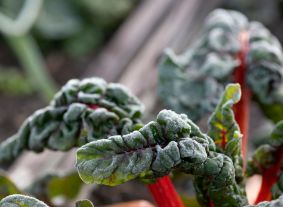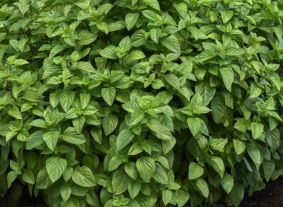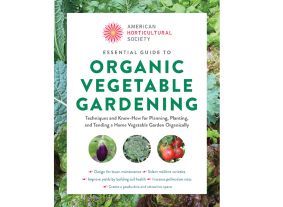How Cold Injury Kills Some But Not All Vegetables
Views: 186

Some of your vegetable plants may be dead or dying and some may be A-okay if temperatures have dipped to 32F or below in your area. If it’s cold where you are, your tomatoes and squash are certainly goners. But your kale, cabbage and Swiss chard are doing fine, even after a coating of frost. Why is that, exactly?
Late last week, right after a killing frost knocked down my remaining tomato and squash plants, I received the University of Massachusetts Extension’s Vegetable Notes newsletter, an excellent compilation of what gardeners and farmers should watch for in the way of the weather, pests, diseases and general crop handling tips here in the New England area. The issue contained the article “Cold Injury in Vegetable Crops and Why It Happens,” and I learned exactly why some crops fold ‘em and some hold ‘em when cold descends. I think many of us assume it’s the water in the cells turning to ice that kills plants. But let’s not assume. There’s another cause.
Cold Temperatures and Fatty Acids
The authors explain it this way: It’s all about the varying levels of saturated and unsaturated fatty acids in a plant’s cell membranes. They use an analogy all of us are familiar with—oil and butter. For example, canola oil is an unsaturated fatty acid and butter is a saturated fatty acid. An unsaturated fatty acid remains in a liquified state in low temperatures. If you have a canola oil-based salad dressing in the refrigerator it remains a liquid and pourable when you remove it and use it on your salad. A saturated fatty acid like butter, on the other hand, is solid at low temperatures. Butter in the fridge is indeed solid. (Leave it on the counter like I do and it’s way more spreadable.)
Cold-tolerant plants have more unsaturated fatty acids, and so their cell membranes remain flexible when exposed to cold temperatures. Cold-sensitive plants have more saturated fatty acids in their cell walls, so when temperatures begin to dip, those fatty acids harden. And when they harden, they are inflexible and begin to break through the cell membranes. Breaking the cell membranes is pretty much a death sentence.
The authors include a TABLE of which crops can’t handle a frost, which can tolerate a light frost and which can handle temps in the 24-28F range. Some veg, like parsnips and maybe even carrots, can even be overwintered outside for harvesting when temperatures begin to moderate. That which is not killed by cold is even sweeter in spring!
Meet Ellen Wells
When you’re raised on a farm, you can’t help but know a thing or two about gardening. Ellen Wells is our expert on edible gardening.…
Ellen's Recent Posts

Everleaf Lemon Basil






